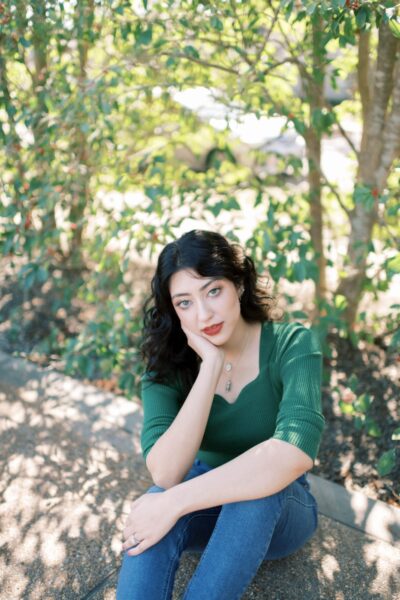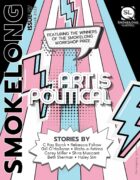What was the genesis of “A Silent Cage”?
It came from both personal and professional experiences. I’ve worked with victims of domestic violence and, in different ways, encountered its lasting effects. I’ve also long been interested in dementia and Alzheimer’s—the way people become trapped in fragments of memory, caught between what they can recall and what has slipped away. It struck me that those in abusive relationships often experience something similar, both from the gaslighting of their abusers and from their own minds erasing or distorting memories, losing entire stretches of time. This story merges those ideas.
But more truthfully, it started with a recurring nightmare. In the dream, I had promised to take in a large number of injured birds, placing them in my basement. Then months would pass. At the very end of the dream, I would go downstairs for something and suddenly remember the birds—only to find they had turned to cannibalism. The smell and sound were overwhelming, and then I’d wake up. I initially wanted to turn that dream into a story, but somewhere along the way, the physical horror of it faded. What remained was the essence of guilt and memory itself, which ultimately shaped “A Silent Cage”.
Beyond that, I was also drawn to exploring intergenerational trauma and the tensions between Western culture, South Asian culture, and faith—how inherited wounds manifest in different ways, how silence and survival shape families. The story became a space to explore these complexities: the weight of memory, the things we suppress to survive, and the blurred lines between duty, guilt, and forgetting.
This is a story cloaked in mystery yet manages to wallop the reader with its depth and power. For example, one part that pushes hard against the boundaries of point of view clarity is, “By the time your daughter arrives, you don’t know who she is. She gives you a name that sounds nice but not one you recognize.” Are there supernatural aspects? Or is the surreal aspect a result of the event being filtered through your main characters’ perspective?
The story is filtered through a mind that is unreliable—not in a deceptive way, but in the way that guilt and memory loss warp reality. Guilt has a way of distorting time, making certain moments inescapable while erasing others entirely. I wanted to explore that liminal space—where memory is unreliable, where recognition slips, where even one’s own past becomes suspect.
The moment you referenced—where the protagonist does not recognize their own daughter—pushes against the boundaries of POV clarity because it’s meant to be disorienting. It’s about how the weight of memory, or the absence of it, can make even the most familiar faces feel unfamiliar. And perhaps the “you” of the story wants this loss to be something supernatural. It’s easier, in some ways, to believe in ghosts than to accept the truth of what has been forgotten—or what was done. The surreal, then, isn’t just a reflection of memory’s failure but also a defense mechanism, a way to avoid looking too closely at the past.
That said, I love when readers interpret elements through different lenses!
What would this story look like had it been told in a more straightforward way? Did you at first consider telling it that way?
The earliest version of “A Silent Cage” was a much longer piece told from the daughter’s first-person perspective. It focused on her experience caring for her mother, someone she hadn’t quite forgiven, and their inability to reconcile their past. But as I kept revising, I realized I was far more drawn to the mother herself—not just as a painful remnant in the daughter’s life, but as someone with her own interior world, shaped by both complicity and suffering. She enabled abuse, but she likely experienced it as well. That complexity, that contradiction, felt like the real center of the story. Shifting to second person allowed me to immerse the reader in the mother’s internal chaos, in the guilt, denial, and fractured recollections that define her experience. A more traditional, linear telling would have provided more clarity, but it wouldn’t have captured the disorientation, the blurring of past and present, or the way someone in her position might struggle to fully acknowledge certain truths.
What are your ideal circumstances for writing flash? What fuels your writing fire?
A really bad day, too much caffeine, and a lot of rumination on an image stuck in my head (in this case, the birds in my nightmare basement) 🙂
What also fuels my writing fire is the question of identity: what forms it, what defines its boundaries—if there even are boundaries. As a first-generation American, and as a Shia Muslim first-gen specifically, I find that identity often exists in a constant state of flux. You can’t go back, it feels like you can’t quite stay here, and you exist in this strange space of being both everything and nothing at the same time. There’s no clear resolution to that tension, and I think that’s why I’m drawn to flash—it allows me to capture those in-between spaces, the contradictions, the fleeting moments of clarity before they slip back into uncertainty.
I’m a little obsessive about the gray areas of identity. I write either to wade through the fog or to obfuscate truths that seem too black and white. Flash is the perfect medium for that—it lets me sit with ambiguity, play with fragmentation, and embrace the discomfort of not having a definitive answer.
Would you provide a link to another work of yours you think SLQ readers will enjoy?
My website is wafaefatima.com 🙂



 The core workshop of SmokeLong Fitness is all in writing, so you can take part from anywhere at anytime. We are excited about creating a supportive, consistent and structured environment for flash writers to work on their craft in a community. We are thrilled and proud to say that our workshop participants have won, placed, or been listed in every major flash competition. Community works.
The core workshop of SmokeLong Fitness is all in writing, so you can take part from anywhere at anytime. We are excited about creating a supportive, consistent and structured environment for flash writers to work on their craft in a community. We are thrilled and proud to say that our workshop participants have won, placed, or been listed in every major flash competition. Community works.